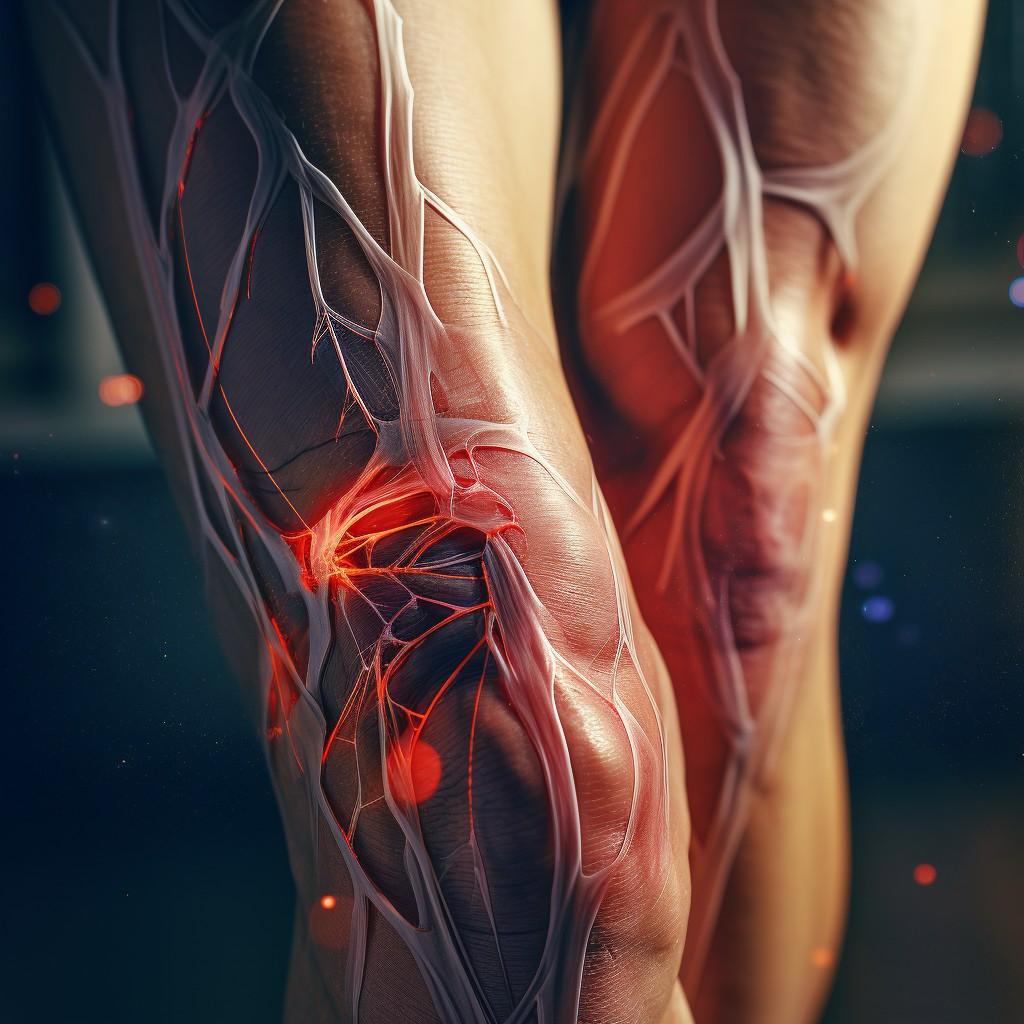
Knee Issues —Knee Deep in Mystery
Here we are unraveling the Physical and Metaphysical Causes of Knee Pain.
Knee pain is often associated with issues of flexibility, mobility, and the ability to move forward in life.
The knees, as a joint, symbolize the point of flexibility and support in our physical bodies, and when we experience pain or discomfort in this area, it may be a reflection of an inner resistance to bending or yielding to life’s circumstances.
In my understanding, knee pain can be indicative of a deep-seated fear of change or a reluctance to submit to the natural flow of life.
It may also point to an egoistic stubbornness, where the individual is unwilling to “bend” to the will of the divine or the greater good.
This resistance can create a blockage in the energy flow, or prana, through the body, particularly in the channels that run through the legs.
From an ancestral karma perspective, knee pain may also be a manifestation of inherited patterns of inflexibility or fear of progress. These patterns passed down through generations, can become imprinted in our energetic blueprint, influencing our physical experience in this lifetime.
To address energetic causes of knee pain, one might engage in practices that promote flexibility not just in the body, but in the mind and spirit as well.
Yoga, for instance, with its emphasis on asanas that open and strengthen the knee joints, can be beneficial. Additionally, meditation and affirmations that focus on releasing fear and embracing change can help to realign the individual’s energy with the flow of life.
In the context of ancestral healing, rituals that honor and seek to understand the experiences of our forebears can be powerful.
By acknowledging the struggles and strengths of our ancestors, we can begin to heal and release the karmic patterns that may be contributing to our knee pain.
Hence the energetic causes of knee pain invite us to examine our relationship with change, progress, and flexibility.
By addressing these issues on a spiritual level, we can begin to heal and find greater ease in our physical experience.
How can one differentiate between physical and metaphysical causes of knee pain, and what are the implications of such a distinction?
To know the origins of knee pain, whether it stems from the physical or metaphysical realm, one must adopt a holistic perspective that encompasses the body, mind, and spirit.
In the physical domain, knee pain may arise from injury, strain, or degenerative conditions affecting the joints, tendons, or ligaments.
These causes are often identifiable through medical diagnostics and manifest as tangible symptoms.
However, in the metaphysical realm, knee pain can be symbolic, reflecting deeper spiritual or emotional issues. The knees, which support our weight and enable us to move forward, may metaphorically represent our ability to carry our burdens and navigate life’s path.
Pain in this area could signify resistance to bending to life’s challenges, a fear of moving forward, or an inability to be flexible in one’s approach to change.
To distinguish between these causes, one must not only consult medical professionals but also engage in introspective practices such as meditation, energy healing, or consulting with a spiritual guide.
These practices can reveal underlying emotional blockages or spiritual lessons that are manifesting as physical discomfort.
The implications of understanding the root cause of knee pain are profound. Addressing only the physical aspect may provide temporary relief, but without resolving the metaphysical issues, the pain may persist or
re-emerge.
Conversely, by acknowledging and working through the metaphysical causes, one may experience not only alleviation of pain but also personal growth and spiritual advancement.
The process of ancestral healing and its potential impact on physical ailments such as knee pain
Ancestral healing is a profound journey into the depths of our being, where the echoes of our lineage resonate with the present.
It is a sacred process that transcends the boundaries of time and space, allowing us to commune with the spirits of our forebears and to heal the wounds that have been carried through generations.
Knee pain, in the context of ancestral healing, may be viewed not merely as a physical ailment but as a manifestation of deeper, unresolved issues within our ancestral line.
It could symbolize the burdens our ancestors bore, the paths they walked, and the struggles they faced.
In some traditions, the knees represent flexibility and support, and pain in this area could indicate a resistance to bending to the will of life or a lack of support felt on one’s journey.
Also, there are emotional and energetic dimensions of physical discomfort, suggesting that knee pain may be linked to a stubborn ego and pride, an inability to bend, fear of moving forward, or a lack of support in life’s endeavors.
By addressing these underlying emotional states through practices such as the Bach Flower Remedies, one can alleviate not only the physical symptoms but also the energetic imbalances.
The potential impact of ancestral healing on such physical ailments is very strong.
By engaging in practices that honor and heal our ancestors, we may release the energetic patterns that contribute to our physical discomfort.
This can be achieved through rituals, meditations, or other forms of energy work that specifically target the release of ancestral karma.
In conclusion, the journey of ancestral healing is a transformative one, offering us the opportunity to mend the fractures within our lineage and to emerge with a renewed sense of wholeness and vitality.
It is a path that requires courage, reverence, and a willingness to delve into the unseen realms of our existence.
Yoga asanas to help in energetic causes of knee pain
To address energetic causes of knee pain through yoga, one might consider asanas that promote flexibility and openness in the joints, particularly the knees.
Asanas such as Pavanamuktasana (Wind-Relieving Pose) and Setu Bandhasana (Bridge Pose) can be beneficial. Pavanamuktasana aids in releasing trapped energies in the lower abdomen, which can indirectly alleviate tension in the knees.
Setu Bandhasana, on the other hand, strengthens the thighs and opens the front of the body, encouraging a sense of forward movement and release of fear.
Meditation/ visualization for knee pain
In meditation, practices that focus on grounding and stability can be helpful.
A visualization meditation where one imagines roots growing from the soles of their feet deep into the earth can enhance a sense of security and support, allowing for a greater ease in facing change and challenges.
Bach remedies for knee pain
For Bach flower remedies, one might consider Hornbeam for the feeling of weariness and resistance to the tasks ahead, Wild Oat for uncertainty about the direction to take in life, and *Walnut for protection against change and outside influences.
These remedies can help to ease the emotional aspects of knee pain, promoting a more flexible and adaptable mindset.
Diet and nutrition support the energetic healing of joint pain
From a nutritional standpoint, certain foods can support joint health and reduce inflammation, which is often a component of knee pain. Foods rich in omega-3 fatty acids, such as flaxseeds and walnuts, can be anti-inflammatory, while antioxidants found in berries and leafy greens can help protect the joints.
Additionally, foods that are high in collagen, like bone broth, or those that support collagen production, such as vitamin C-rich fruits, can aid in maintaining the integrity of the connective tissues in the knees.
It’s important to consider a holistic approach that combines diet, movement, and emotional well-being to address knee pain from a metaphysical perspective.
